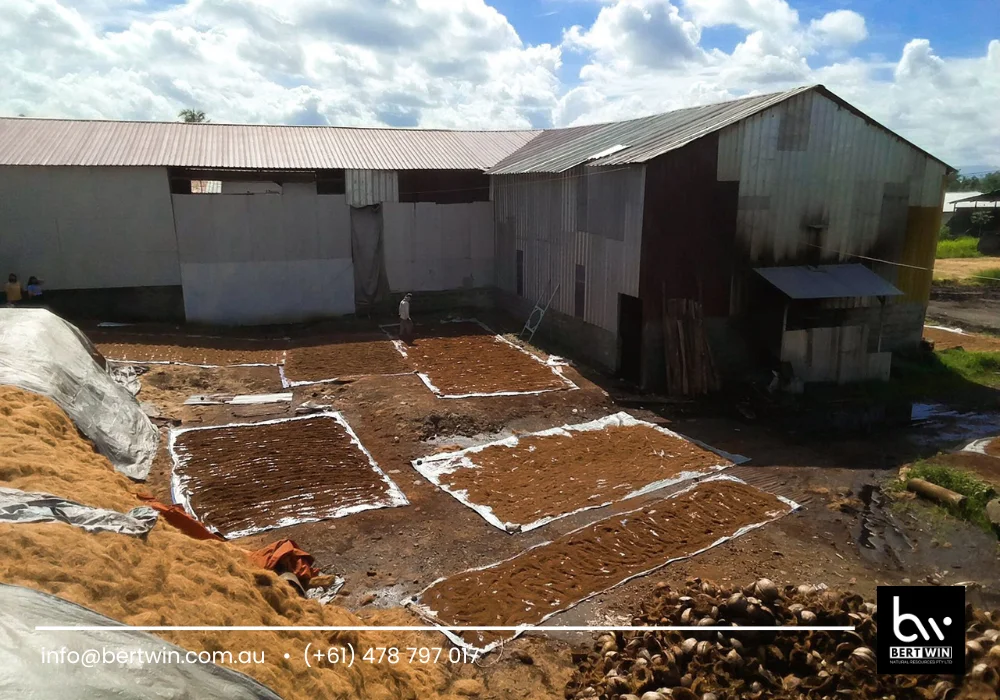coco peat nursery has become one of the most innovative and sustainable growing solutions used in modern agriculture and horticulture. In the last decade, farmers, nursery operators, and greenhouse managers have increasingly shifted from traditional soil-based systems to soilless media because of environmental challenges, soil degradation, and the demand for higher productivity under controlled conditions. This shift forms the background of the expanding use of coco peat nursery systems, which offer significant advantages in aeration, water retention, plant root development, and eco-friendly production. Derived from coconut husk, coco peat is a renewable resource widely used in seedling propagation, vegetable nurseries, flower production, vertical farming, and commercial greenhouse systems. Its consistent quality and sustainable nature have made it a preferred medium for both large-scale farming enterprises and small household growers.

What Makes Coco Peat Nursery Stand Out
Coco peat nursery media is known for its superior physical and biological properties. Unlike soil, which can vary greatly in composition, coco peat offers a standardized growing environment that is easy to monitor and control. It consists of a light, porous structure that allows sufficient oxygen to reach plant roots, reducing the risk of root disease such as damping-off. At the same time, its exceptional water retention capacity ensures seedlings have consistent access to moisture without becoming waterlogged. This balance between aeration and water retention is one of the major reasons why growers adopt coco peat nursery systems.
Another advantage is its chemical stability. Coco peat contains natural lignin, which helps maintain long-term structure without rapidly decomposing. It also naturally contains beneficial microelements like potassium and iron. While the pH level of raw coco peat may require buffering before use, high-quality commercially processed coco peat nursery blocks are typically pre-washed to ensure optimal pH and low sodium content, making them ready for immediate planting.
Applications in Seedling Production
The most common application of coco peat nursery is seed germination. Vegetable producers grow seedlings in seedling trays filled with coco peat before transplanting them into open fields or greenhouse beds. The uniform and soft texture allows delicate young roots to spread easily, improving establishment and survival rates after transplanting. Crops such as tomatoes, peppers, cucumbers, eggplants, spinach, and lettuce respond particularly well to coco peat nursery conditions. In commercial nurseries, automated irrigation systems often supply controlled volumes of water and nutrients, making the entire process more efficient and predictable.
Flower growers also benefit greatly from coco peat nursery technology. Floriculture crops like marigolds, chrysanthemums, roses, and petunias have been shown to produce stronger stems, healthier foliage, and more blooms when grown in high-quality coco peat. Even ornamental plants in landscaping nurseries use it as part of potting mixes.
Environmental Benefits
One of the strongest arguments in favor of coco peat nursery systems is sustainability. Traditional peat moss—long used in horticulture—is harvested from natural peat bogs and often takes centuries to regenerate. Coco peat, on the other hand, is a by-product of the coconut industry. Instead of ending up as waste, the coconut husk is processed into a valuable growing material, promoting a circular and eco-friendly resource cycle.
Furthermore, coco peat nursery media contributes to reduced fertilizer and water consumption. Its high cation-exchange capacity allows nutrients to be stored and gradually released to plants, reducing nutrient waste and leaching. This makes coco peat especially useful in areas where water and fertilizer inputs need to be minimized for economic or environmental reasons. Greenhouse operations using coco peat nursery blocks often report higher yields using fewer resources compared to soil cultivation.
Market Trends and Growing Demand
As global agriculture continues moving toward precision farming and controlled environment systems, the use of coco peat nursery substrates is expected to expand significantly. Urban farming, hydroponics, aeroponics, and vertical farms rely heavily on sterile and consistent growing media. Young entrepreneurs, small-scale growers, and homeowners also drive market demand as they look for easy, low-maintenance ways to produce food locally.
The rise of export-oriented vegetable production in many tropical countries has also contributed to increased usage. Countries that supply high-value crops now adopt coco peat nursery systems to meet strict quality standards demanded by international markets, ensuring seedlings are disease-free, strong, and able to withstand long transportation and storage.
How to Use Coco Peat Nursery Successfully
Growers planning to adopt coco peat nursery systems should consider best practices to maximize results:
Choosing the Right Grade
Coco peat comes in several forms including loose substrate, compressed blocks, grow bags, plugs, or mixed blends. Seedling trays generally require fine to medium-grade coco peat with uniform particle size for smooth root penetration.
Hydration and Preparation
Compressed coco peat nursery blocks must be hydrated before use. They typically expand several times their dry volume when water is added. Users should ensure that the substrate is evenly moistened but not overly saturated.
Nutrient Management
Although coco peat naturally contains beneficial elements, it does not provide all nutrients required for plant growth. Supplementation with balanced fertilizers is important. In hydroponic greenhouses, automatic dosing systems maintain nutrient levels, ensuring consistency across growing cycles.
Challenges and Considerations
While coco peat nursery media offers multiple benefits, users must be aware of potential challenges. In some cases, low-quality coco peat may contain high salt content, especially if improperly washed. It is therefore essential to purchase from reputable suppliers who meet international agricultural standards. Users must also monitor nutrient build-up over time, as the medium retains fertilizer ions efficiently. Regular flushing and proper irrigation schedule can help maintain a balanced growing environment.
Conclusion
The increasing global adoption of coco peat nursery systems highlights the agricultural sector’s commitment to sustainable and high-performance growing solutions. By offering excellent aeration, moisture retention, and environmental benefits, coco peat nursery substrates have become essential tools for commercial seedling production, flower propagation, greenhouse vegetable cultivation, and urban farming systems. As demand for cleaner and more efficient farming continues to rise, the role of coco peat in shaping the future of agriculture will only grow stronger.
For further information, you may contact WhatsApp at (+61) 478797017 or via email at info@bertwin.com.au.
